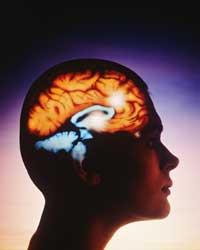Influence of imagined fear on the nervous system
To detect dangerous situations, humans rely on previous or learned experiences through communication. For example, dogs can be dangerous because a dog bit, but also because it has heard a dog bite someone. To understand the functioning of the nervous system in learning fear, most researchers have studied the first type of learning fear, that is, conditioned fear. On the contrary, the nervous functioning related to the type of fear learned by communication is much less known.

Conditioned fear has been investigated in animals and humans and the nervous system of learning and the expression of fear has been well known. In conditional fear, it is known that the structure of the brain called tonsil is essential to express the response. Now the function of the amygdala in fear of a situation heard has been investigated.
Elizabeth A of New York University. Neurologist Phelps investigated the action of the amygdala by the so-called "taught fear" and demonstrated that orally communicated fear influenced the amygdala. In a deeper investigation, he discovered that amygdala activity is related to the physical manifestations of the response to fear.
In the “taught terror” the human being does not receive adverse stimuli, but they tell him that a neutral stimulus may be related to an adverse event. In Phelps' research, participants on the computer screen were shown series of three figures: a yellow square, a blue square and the word "rest". In addition, once explained one of these colors, they were told that through an electrode placed on the wrist they would receive an electric shock (condition that generates fear), but they would not receive a discharge when another color appeared (safe condition). Although no discharge was given in the investigation, everyone thought an electric shock had been felt.
According to the study of neurologist Phleps, although adverse effects have not been known in advance, the participation of the amygdala in the expression of fear that is felt when anticipated, that is, the fears that are found in human imagination act on the nervous system as learned through experience.
Buletina
Bidali zure helbide elektronikoa eta jaso asteroko buletina zure sarrera-ontzian











